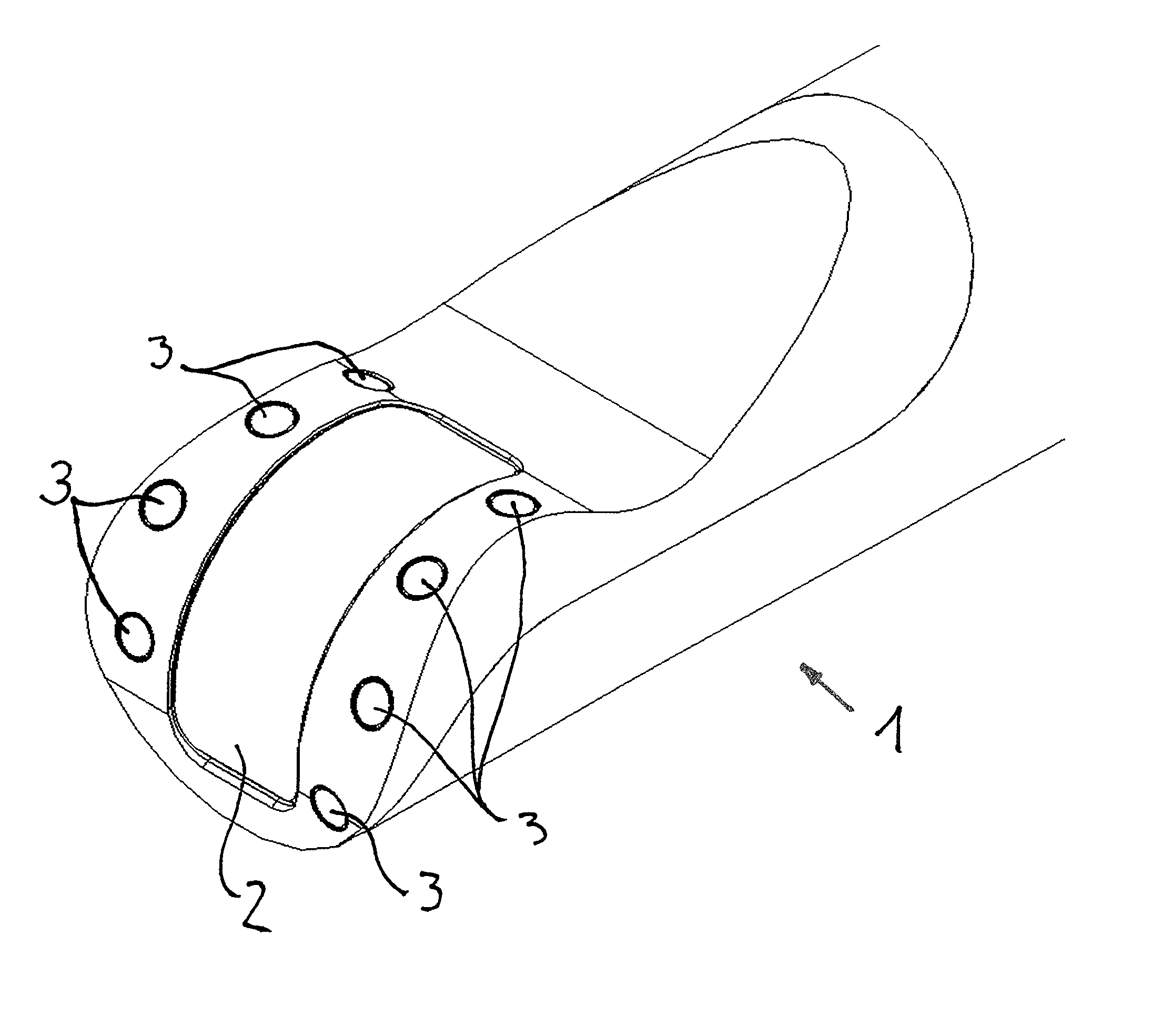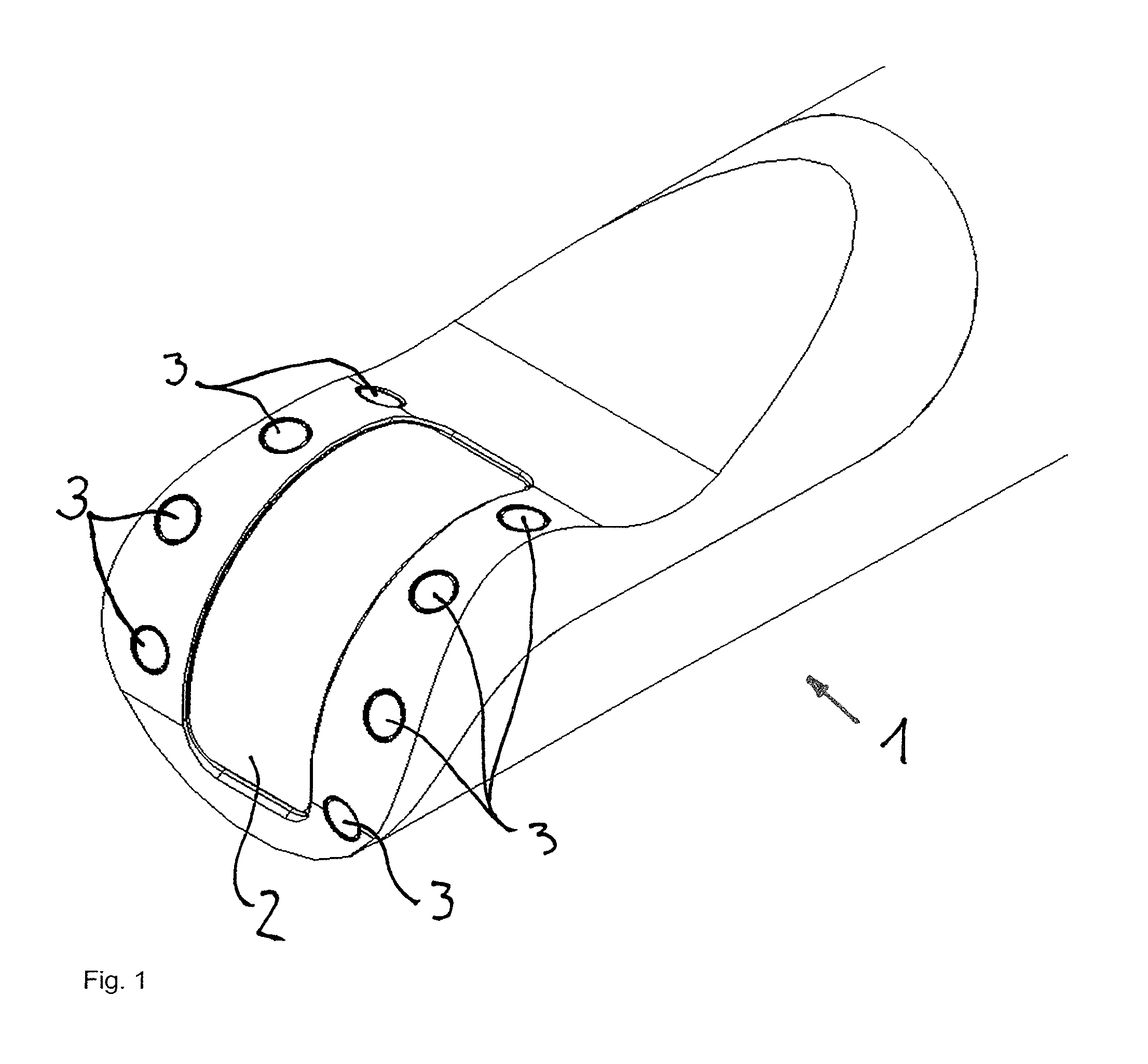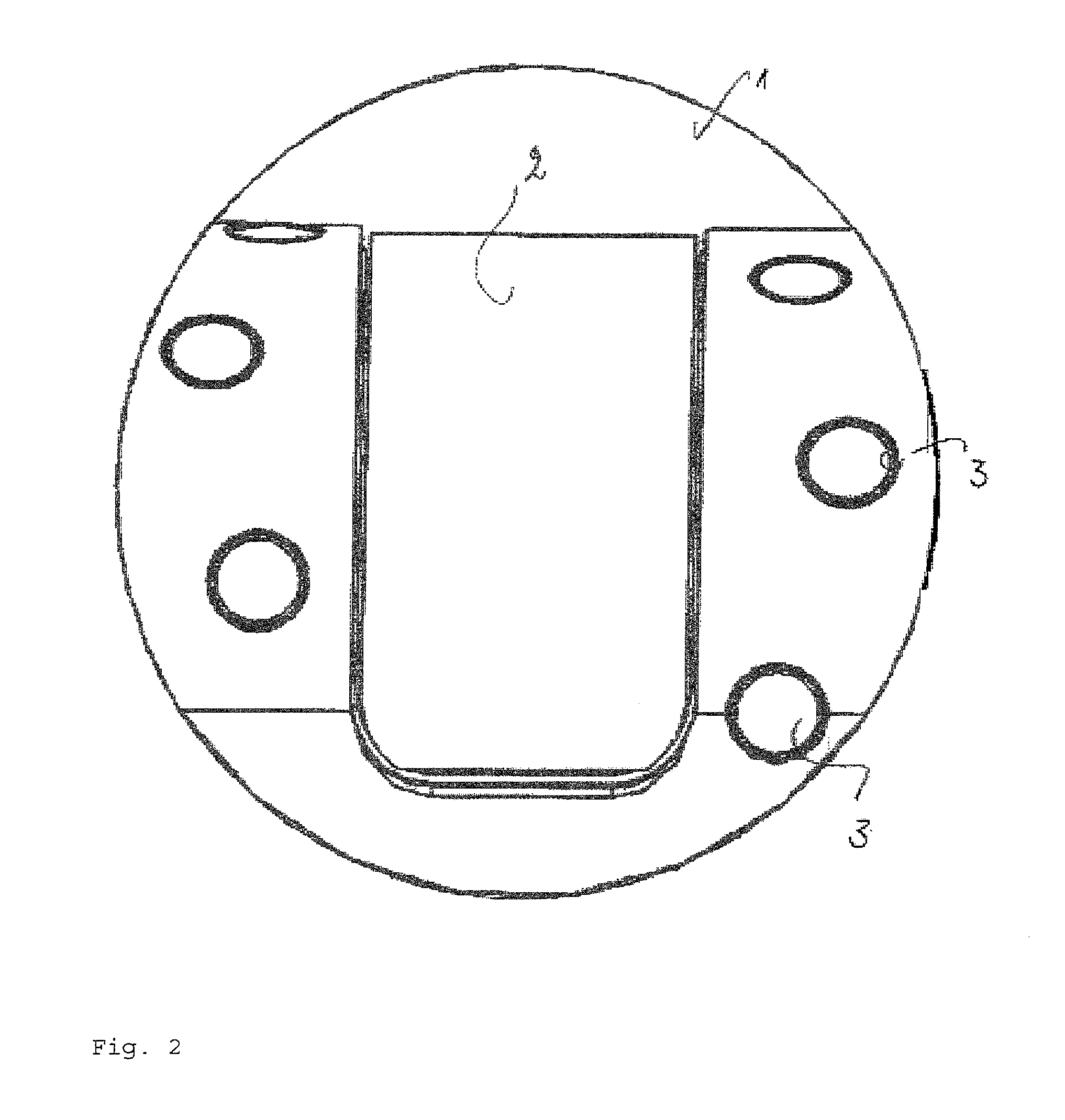Endoscope-pipe
a technology of endoscope and pipe, which is applied in the field of endoscope pipes, can solve the problems that endoscope pipes, in fact, typically demonstrate an unpleasantly non-homogeneous illumination of the working area, and achieve the effects of good brightness, high reliability and good observation of the working area
- Summary
- Abstract
- Description
- Claims
- Application Information
AI Technical Summary
Benefits of technology
Problems solved by technology
Method used
Image
Examples
Embodiment Construction
[0018]FIG. 1 shows in a diagonal view the distal end 1 of the inventive endoscope pipe. Shown at the center is the observation window 2, which is longitudinally extended in configuration and is positioned at the center in the area of the distal end 1. The observation window 2 here is configured as continuously domed, so that the dome extends similarly to a cylinder in the longitudinal direction of the endoscope pipe. The observation window here shows an essentially rectilinear shape, which is configured as essentially cylindrically domed.
[0019]The light outlet openings 3 are positioned along the longitudinal extension of the observation window 2. There are a total of eight light outlet openings, which are positioned opposite one another and asymmetrically to the longitudinal extension of the longitudinal axis of the observation window. They are placed at varying distances from the longitudinal axis or are offset in alternation along the longitudinal axis of the observation window 2....
PUM
 Login to View More
Login to View More Abstract
Description
Claims
Application Information
 Login to View More
Login to View More - R&D
- Intellectual Property
- Life Sciences
- Materials
- Tech Scout
- Unparalleled Data Quality
- Higher Quality Content
- 60% Fewer Hallucinations
Browse by: Latest US Patents, China's latest patents, Technical Efficacy Thesaurus, Application Domain, Technology Topic, Popular Technical Reports.
© 2025 PatSnap. All rights reserved.Legal|Privacy policy|Modern Slavery Act Transparency Statement|Sitemap|About US| Contact US: help@patsnap.com



